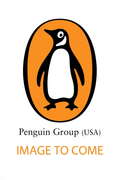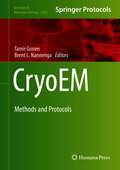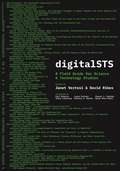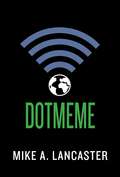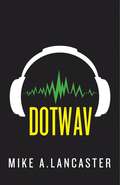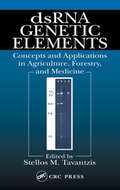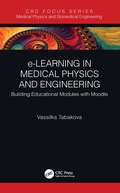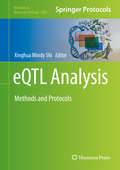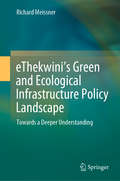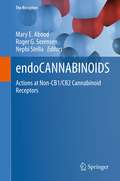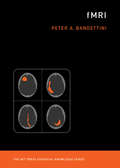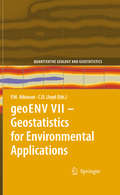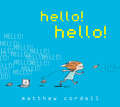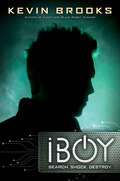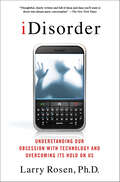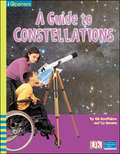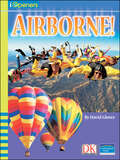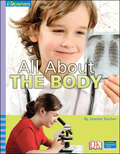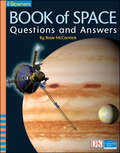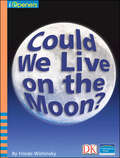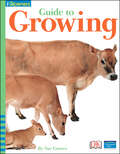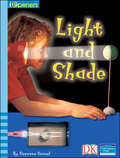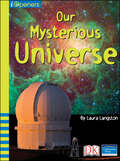- Table View
- List View
control
by Lydia KangFor fans of Uglies comes a spiraling, intense sci fi thriller."Control blew me away. The twists and turns and suspense made for a thrilling ride. Zel is as authentic a character as I've read in a very long time. Highly recommended" - James Dashner, New York Times bestselling author of The Maze RunnerSet in 2150 -- in a world of automatic cars, nightclubs with auditory ecstasy drugs, and guys with four arms -- this is about the human genetic "mistakes" that society wants to forget, and the way that outcasts can turn out to be heroes.When their overprotective father is killed in a terrible accident, Zel and her younger sister, Dylia, are lost in grief. But it's not until strangers appear, using bizarre sensory weapons, that the life they had is truly eviscerated. Zel ends up in a safe house for teens that aren't like any she's ever seen -- teens who, by law, shouldn't even exist. One of them -- an angry tattooed boy haunted by tragedy -- can help Zel reunite with her sister.But only if she is willing to lose him.
cryoEM: Methods and Protocols (Methods in Molecular Biology #2215)
by Tamir Gonen Brent L. NannengaThis volume details the most up-to-date cryo-EM techniques from leading researchers. Chapters are organized into four parts with emphasis on electron cryotomography, single particle analysis, and the crystal based cryo-EM methods of 2D electron crystallography, and MicroED for the study of 3D crystals. Written in the highly successful Methods in Molecular Biology series format, chapters include introductions to their respective topics, application details for both the expert and non-expert reader, and tips on troubleshooting and avoiding known pitfalls. Authoritative and cutting-edge, CryoEM: Methods and Protocols aims to serve as an excellent resource on cryo-EM and can serve as the foundation for new researchers to this growing field in structural biology.
digitalSTS: A Field Guide for Science & Technology Studies
by Janet Vertesi David RibesScholars across the humanities, social sciences, and information sciences are grappling with how best to study virtual environments, use computational tools in their research, and engage audiences with their results. Classic work in science and technology studies (STS) has played a central role in how these fields analyze digital technologies, but many of its key examples do not speak to today’s computational realities. This groundbreaking collection brings together a world-class group of contributors to refresh the canon for contemporary digital scholarship.In twenty-five pioneering and incisive essays, this unique digital field guide offers innovative new approaches to digital scholarship, the design of digital tools and objects, and the deployment of critically grounded technologies for analysis and discovery. Contributors cover a broad range of topics, including software development, hackathons, digitized objects, diversity in the tech sector, and distributed scientific collaborations. They discuss methodological considerations of social networks and data analysis, design projects that can translate STS concepts into durable scientific work, and much more.Featuring a concise introduction by Janet Vertesi and David Ribes and accompanied by an interactive microsite, this book provides new perspectives on digital scholarship that will shape the agenda for tomorrow’s generation of STS researchers and practitioners.
dotmeme
by Mike A. LancasterAfter preventing conservative MP Victor Palgrave from engineering a human mind-controlled teenage army, Joe Dyson and Ani Lee, operatives for a secret youth division of British Intelligence, have probably earned a rest. But there’s no time to be lax with bizarre new developments popping up across the UK and the world. While busting a group that’s pressing teen runaways into slave labor building tech, Joe discovers a computer component not yet out on the market, linked to a very popular, but highly secretive gaming company based in California. Meanwhile, skilled hacker Ani works her way into a vigilante hacking ring intent on using viral social media to bring the truth to the world and bring world governments to their knees. They’re method: rewriting reality, virtually, so that the world never knows the difference. As Ani's and Joe’s missions draw closer together, they realize that they have been corralled into a real-life video game—one where the levels are constantly being rewritten, and the stakes are constantly shifting. What happens when AI evolves to the point where it has a mind of its own? When the computer threatens to turn on its master? Joe, Ani, and the world are about to find out.
dotwav
by Mike A. Lancaster"There’s something in that sound. Something bad. Something dangerous.”Fifteen-year-old Ani Lee is a skilled hacker researching a strange .wav file that she’s downloaded when it behaves as no file ever should.Joe Dyson is a seventeen-year-old American transplant recruited into a secret teen division of the British intelligence service who’s looking into the disappearance of a friend caught up in an underground music scene that might be more than it appears.When Ani and Joe’s investigations intertwine, they discover that the .wav file and the music are linked-someone’s embedding the file into tracks to create a mind-controlled teen army.But who’s behind it? And why? And how do you stop a sound?An exhilarating sci-fi techno-thriller that blends music, mind control, and conspiracy perfect for fans of Little Brother, Brain Jack, and Proxy.Sky Pony Press, with our Good Books, Racehorse and Arcade imprints, is proud to publish a broad range of books for young readers-picture books for small children, chapter books, books for middle grade readers, and novels for young adults. Our list includes bestsellers for children who love to play Minecraft; stories told with LEGO bricks; books that teach lessons about tolerance, patience, and the environment, and much more. While not every title we publish becomes a New York Times bestseller or a national bestseller, we are committed to books on subjects that are sometimes overlooked and to authors whose work might not otherwise find a home.
dsRNA Genetic Elements: Concepts and Applications in Agriculture, Forestry, and Medicine
by Stellos M. TavantzisOur understanding of the nature, origin, and biological roles of double-stranded RNA found in fungi, plants, and animals has advanced greatly during the last five years. Because these genetic elements are capable of replication, they can be used to manage fungal diseases of crops, vegetables, turfgrass, fruit, and forest trees using genetic means r
e-Learning in Medical Physics and Engineering: Building Educational Modules with Moodle (Series in Medical Physics and Biomedical Engineering)
by Vassilka TabakovaThe need for qualified specialists to work with and apply sophisticated technology in contemporary medicine is rapidly growing. Professional bodies predict that meeting the needs of healthcare globally will require almost tripling the number of Medical Physicists by 2035. Similar challenges exist in the constantly growing profession of Medical Engineering. They can be solved most efficiently and effectively with the tools of e-Learning, and a free and open-source Virtual Learning Environment (VLE) platform such as Moodle is a welcome solution. The Moodle VLE platform is a free, open source learning management system that is the most popular choice for higher educational institutions worldwide. However, the best practices of the Moodle system are still unknown to many. This practical guide provides educators, programme administrators, and programme directors with a condensed guide to Moodle and step-by-step instructions on how to create a single course or an entire educational programme. It also discusses cost-effective ways to apply e-Learning in an educational institution. This guide is accessible to all professionals, even those without specialist IT skills, and will be helpful to educators of all levels in Medical Physics and Engineering, as well as in other medical and medical-related specialties or disciplines with a strong imaging component. Features: Provides step-by-step instructions of how to build a course/module for Higher Education on Moodle Gives practical solutions to implementing e-Learning in Medical Physics and Engineering Explores useful tips and tricks for best practice
eQTL Analysis: Methods and Protocols (Methods in Molecular Biology #2082)
by Xinghua Mindy ShiThis volume details state-of-art eQTL analysis, where interdisciplinary researchers are provided both theoretical and practical guidance to eQTL analysis and interpretation. Chapters guide readers through methods and tools for eQTL and QTL analysis and the usage of such analysis in various scenarios. Written in the highly successful Methods in Molecular Biology series format, chapters include introductions to their respective topics, lists of the necessary materials and reagents, step-by-step, readily reproducible laboratory protocols, and tips on troubleshooting and avoiding known pitfalls. Authoritative and cutting-edge, eQTL Analysis: Methods and Protocols to ensure successful results in the further study of this vital field.
eThekwini’s Green and Ecological Infrastructure Policy Landscape: Towards a Deeper Understanding
by Richard MeissnerThis book offers the reader a deeper understanding of the eThekwini Metropolitan Municipality’s green and ecological infrastructure policy landscape. The author utilises the PULSE3 analytical framework to conduct an in-depth examination and to show how experts frame and implement the municipality’s green and ecological infrastructure strategies and projects. Although the initial purpose of this book was to investigate the role of green and ecological infrastructures in eThekwini’s water security aspirations, the author realised that climate change adaptation and mitigation play a more central role in motivating the municipality to develop and implement such science-driven projects. To be sure, science that is informed by a positivist paradigm, guides how, where and when the municipality should develop green and ecological infrastructures. Furthermore, a positivistic stance is generated in this policy landscape, where science and politics meet at a local government level, and the book offers an insight into the science–policy interface, as well as the normative and value orientations that positivism often ignores. The book also shows the usefulness of the PULSE3 framework and how it can assist scientists in all fields to gain a deeper understanding of the complications that are faced by humankind. This book fills a market gap by providing a view of how scientists think about problems and how to solve them by using established paradigms and theories.
endoCANNABINOIDS
by Roger G Sorensen Mary E. Abood Nephi StellaThis book is intended as a scientific resource for cannabinoid researchers carrying out animal and human experiments, and for those who are interested in learning about future directions in cannabinoid research. Additionally, this book may be of value to investigators currently working outside the field of cannabinoid research who have an interest in learning about these compounds and their atypical cannabinoid signalling. This book provides insight into the potential medical application of cannabinoids and their therapeutic development for the treatment of human disease.
fMRI (The MIT Press Essential Knowledge Series)
by Peter A. BandettiniAn accessible introduction to the history, fundamental concepts, challenges, and controversies of the fMRI by one of the pioneers in the field. The discovery of functional MRI (fMRI) methodology in 1991 was a breakthrough in neuroscience research. This non-invasive, relatively high-speed, and high sensitivity method of mapping human brain activity enabled observation of subtle localized changes in blood flow associated with brain activity. Thousands of scientists around the world have not only embraced fMRI as a new and powerful method that complemented their ongoing studies but have also gone on to redirect their research around this revolutionary technique. This volume in the MIT Press Essential Knowledge series offers an accessible introduction to the history, fundamental concepts, challenges, and controversies of fMRI, written by one of the pioneers in the field. Peter Bandettini covers the essentials of fMRI, providing insight and perspective from his nearly three decades of research. He describes other brain imaging and assessment methods; the sources of fMRI contrasts; the basic methodology, from hardware to pulse sequences; brain activation experiment design strategies; and data and image processing. A unique, standalone chapter addresses major controversies in the field, outlining twenty-six challenges that have helped shape fMRI research. Finally, Bandettini lays out the four essential pillars of fMRI: technology, methodology, interpretation, and applications. The book can serve as a guide for the curious nonexpert and a reference for both veteran and novice fMRI scientists.
fMRI Techniques and Protocols (Neuromethods #220)
by Massimo FilippiThis third edition volume expands on the previous edition with updates on the latest methodological aspects of fMRI and achievements made through the applications to the study of central nervous system functioning in the clinical field. The chapters in the book are organized in four parts: Part One talks about the basic knowledge for the understanding of the technical aspects of fMRI. Part Two describes the main findings obtained from the application of fMRI to study brain system function of healthy individuals. Part Three explores clinical findings obtained from the use of fMRI to assess the role of brain plasticity in major neurological and psychiatric conditions. Part Four presents novel approaches for the integration of fMRI data with measures of damage assessed using structural MR techniques and the use of fMRI to image spinal cord function. In the Neuromethods series style, chapters include the kind of detail and key advice from the specialists needed to get successful results in your laboratory.Cutting-edge and comprehensive, fMRI Techniques and Protocols, Third Edition provides clinicians and researchers with a &“user-friendly&” summary of the field, and helps them plan and carry out successful studies.
geoENV VII – Geostatistics for Environmental Applications
by C. D. Lloyd Peter M. AtkinsonThis volume brings together selected contributions from geoENV 2008, the 7th International Conference on Geostatistics for Environmental Applications, held in Southampton, UK, in September 2008. This book presents the state-of-the-art in geostatistics for the environmental sciences. It includes a wide range of methodological advances and applications. It offers insight and guidance for researchers, professionals, graduate students and others seeking information on the latest perspectives in the field. The rich body of applications will enable those new to geostatistics to assess the utility of the methods for their own applications. The book includes 35 chapters on topics as diverse as methodological developments, applications in the soil sciences, climatology, pollution, health, wildlife mapping, fisheries and remote sensing, amongst other areas. With its focus on environmental applications of geostatistics, rather than the more traditional geostatistical remit of mining and petroleum exploration, this book is part of a series that presents an invaluable resource. This book will be a first port of call for those who wish to apply geostatistical methods in the environmental sciences.
hello! hello! (Hyperion Picture Book (eBook))
by Matthew CordellOutside the world is bright and colorful, but Lydia's family is too busy with their gadgets to notice. She says Hello to everyone. Hello? Hello! Her father says hello while texting, her mother says hello while working on her laptop and her brother doesn't say hello at all. The T.V shouts Hello! But she doesn't want to watch any shows. Lydia, now restless, ventures outside. There are so many things to say hello to! Hello rocks! Hello leaves! Hello flowers! When Lydia comes back home she decides to show her family what she has found, and it's hello world and goodbye gadgets!
iBoy: Gekürzte Lesung
by Kevin BrooksA WiFi, WTF thriller from the author of Candy. “Intelligent and fast-moving, cleverly shifts between comic-book thrills and touching realism.” —The New York Times Book ReviewWhat can he do with his new powers—and what are they doing to him?Before the attack, Tom Harvey was just an average teen. But a head-on collision with high technology has turned him into an actualized App. Fragments of a shattered iPhone are embedded in his brain. And they’re having an extraordinary effect on his every thought.Because now Tom knows, sees, and can do more than any normal boy ever could. But with his new powers comes a choice: To avenge Lucy, the girl he loves, will he hunt down the vicious gangsters who hurt her? Will he take the law into his own electric hands and exterminate them from the South London housing projects where, by fear and violence, they rule?Not even his mental search engine can predict the shocking outcome of iBoy’s actions.“The classic superhero plot, at once cutting edge sci-fi and moral fable.” —Kirkus Reviews (starred review)“Brooks is a master at revealing the unsteady fault line between good and evil.” —Booklist (starred review)“Brilliant, harrowing, uplifting . . . with a passionate truth. If I were a producer, I’d option iBoy immediately. This is the big one. Bravo!” —The London Times“Brooks delivers something that’s less a work of science fiction than a brutal rumination on vengeance, near-limitless power, and their effects on people, with believably flawed characters and a harsh setting that serve the story well.” —Publishers Weekly
iDisorder: Understanding Our Obsession with Technology and Overcoming Its Hold on Us
by Larry RoseniDisorder: changes to your brain's ability to process information and your ability to relate to the world due to your daily use of media and technology resulting in signs and symptoms of psychological disorders - such as stress, sleeplessness, and a compulsive need to check in with all of your technology. Based on decades of research and expertise in the "psychology of technology," Dr. Larry Rosen offers clear, down-to-earth explanations for why many of us are suffering from an "iDisorder." Rosen offers solid, proven strategies to help us overcome the iDisorder we all feel in our lives while still making use of all that technology offers. Our world is not going to change, and technology will continue to penetrate society even deeper leaving us little chance to react to the seemingly daily additions to our lives. Rosen teaches us how to stay human in an increasingly technological world.
iGenetics: A Mendelian Approach
by Peter J. RussellA Mendelian Approach reflects the dynamic nature of modern genetics by emphasizing an experimental, inquiry-based approach with a solid treatment of many research experiments.
iOpener: A Guide to Constellations (iOpeners)
by Gib Goodfellow Liz StensonThis book covers everything you need to know about constellations, stargazing, and star maps. Diagrams, fun fact boxes, and photographs bring the subject to life, while a glossary, an index, and discussion questions aid in reading comprehension.Grade: 6Subject: Earth ScienceGenre: Reference Comprehension Skill/Strategy: Comprehend/Take NotesDiagnostic Reading Assessment (DRA): 60Guided Reading Level: WLexile Level: 920LDK's iOpeners equip K-6 students with the skills and strategies they need to access and comprehend nonfiction so that they are not only learning to read but reading to learn. The combination of high-interest content and eye-popping photography of iOpeners brings science, math and social studies topics to life, raises student achievement in reading, and boosts standardized test scores.
iOpener: Airborne! (iOpeners)
by David GloverThis book for advanced readers covers everything you need to know about the science of flight and all the different ways to fly. Diagrams, fun fact boxes, timelines, and photographs bring the subject to life, while a glossary, an index, and discussion questions aid in reading comprehension.Grade: 6Subject: Physical ScienceGenre: Informational TextComprehension Skill/Strategy: Use Graphic SourcesDiagnostic Reading Assessment (DRA): 60Guided Reading Level: VLexile Level: 1010LDK's iOpeners equip K-6 students with the skills and strategies they need to access and comprehend nonfiction so that they are not only learning to read but reading to learn. The combination of high-interest content and eye-popping photography of iOpeners brings science, math and social studies topics to life, raises student achievement in reading, and boosts standardized test scores.
iOpener: All About the Body (iOpeners)
by Joanne SinclairThis book about the human body covers all parts of the body, from the skeleton, to the brain, to the heart. Fact panels, diagrams, a glossary, and an index make it easy to understand everything about the body, while discussion questions aid in reading comprehension.Grade: 3Subject: Life ScienceGenre: ReferenceComprehension Skill/Strategy: Comprehend/Take NotesDiagnostic Reading Assessment (DRA/EDL): 40Guided Reading Level: SLexile Level: 690LDK's iOpeners equip K-6 students with the skills and strategies they need to access and comprehend nonfiction so that they are not only learning to read but reading to learn. The combination of high-interest content and eye-popping photography of iOpeners brings science and social studies topics to life, raises student achievement in reading, and boosts standardized test scores.
iOpener: Book of Space (iOpeners)
by Rosie McCormickThis 1,065-word book uses a question and answer format to explain everything about space, from space exploration, to telescopes, to planets, to our solar system. Photography, diagrams, and timelines cover everything young readers will want to know about space, and discussion questions aid in reading comprehension. Grade: 2Subject: Earth ScienceGenre: ReferenceComprehension Skill/Strategy: Identify Text Organization and StructureDiagnostic Reading Assessment (DRA/EDL): 28Guided Reading Level: MLexile Level: N/ADK's iOpeners equip K-6 students with the skills and strategies they need to access and comprehend nonfiction so that they are not only learning to read but reading to learn. The combination of high-interest content and eye-popping photography of iOpeners brings science and social studies topics to life, raises student achievement in reading, and boosts standardized test scores.
iOpener: Could We Live on the Moon? (iOpeners)
by Frieda WishinskyThis 703-word book teaches everything about the Moon and explains why it would be so difficult to live there! It covers topics such as air, water, weather, and gravity. This title also includes a section of recommended reading for young space fanatics, an index, a glossary of terms, and discussion questions to aid in reading comprehension. Grade: 2Subject: Earth ScienceGenre: Informational TextComprehension Skill/Strategy: Classify/CategorizeDiagnostic Reading Assessment (DRA/EDL): 28Guided Reading Level: MLexile Level: N/ADK's iOpeners equip K-6 students with the skills and strategies they need to access and comprehend nonfiction so that they are not only learning to read but reading to learn. The combination of high-interest content and eye-popping photography of iOpeners brings science and social studies topics to life, raises student achievement in reading, and boosts standardized test scores.
iOpener: Guide to Growing (iOpeners)
by Sue GravesThis 106-word book tells all about the life cycles and growth of organisms, including frogs, butterflies, ostriches, and even sunflowers. This title includes an index and discussion questions to aid in reading comprehension.Grade: 1Subject: Life ScienceGenre: ReferenceComprehension Skill/Strategy: Sequence of EventsDiagnostic Reading Assessment (DRA/EDL): 10Guided Reading Level: FLexile Level: 9DK's iOpeners equip K-6 students with the skills and strategies they need to access and comprehend nonfiction so that they are not only learning to read but reading to learn. The combination of high-interest content and eye-popping photography of iOpeners brings science and social studies topics to life, raises student achievement in reading, and boosts standardized test scores.
iOpener: Light and Shade (iOpeners)
by Susanna DanielThis book for advanced readers covers everything you need to know about light, from reflection and refraction to sun- and moonlight. Step-by-step instructions suggest fun projects to do with light. Diagrams, fun fact boxes, and photographs bring the subject to life, while a glossary, an index, and discussion questions aid in reading comprehension.Grade: 5Subject: Earth ScienceGenre: Procedural TextComprehension Skill/Strategy: Draw ConclusionsDiagnostic Reading Assessment (DRA): 50Guided Reading Level: ULexile Level: 760LDK's iOpeners equip K-6 students with the skills and strategies they need to access and comprehend nonfiction so that they are not only learning to read but reading to learn. The combination of high-interest content and eye-popping photography of iOpeners brings science, math and social studies topics to life, raises student achievement in reading, and boosts standardized test scores.
iOpener: Our Mysterious Universe (iOpeners)
by Laura LangstonThis book covers everything you need to know about the universe, including information on our solar system, stars, galaxies, and the Big Bang. Diagrams, fun fact boxes, and photographs bring the subject to life, while a glossary, an index, and discussion questions aid in reading comprehension.Grade: 6Subject: Earth ScienceGenre: Informational TextComprehension Skill/Strategy: SummarizeDiagnostic Reading Assessment (DRA): 60Guided Reading Level: VLexile Level: 790LDK's iOpeners equip K-6 students with the skills and strategies they need to access and comprehend nonfiction so that they are not only learning to read but reading to learn. The combination of high-interest content and eye-popping photography of iOpeners brings science, math and social studies topics to life, raises student achievement in reading, and boosts standardized test scores.
